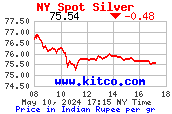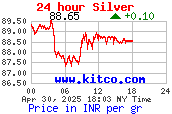In the United States, physical investment in silver is dominated by the purchase of oneounce bullion coins and 100-ounce bars. The bars are almost entirely produced locally. However, the surge in demand during 2008 saw a number of other institutions start to produce their own bars, including private mints and industrial manufacturers. The coin market is dominated by the US
Mint’s Eagle one-ounce bullion coin. A number of overseas bullion coins have also proved popular in the United States, particularly the Canadian Maple Leaf, although for example the AustrianVienna Philharmonic and Australian Kookaburra, Lunar and Koala coins have all
achieved some success.
The silver Eagle, first introduced in 1986, saw sales remain broadly stable during much of
the 2000s, averaging 9.4 Moz during 2000-2007. However, since 2008, minting has increased substantially, with total coin output in both 2008 and 2009 achieving successive records of 19.6 Moz and 28.8 Moz. Furthermore, 2010 is on course to post a new record high, with combined January-to-July sales up 27% year-on-year. Demand for these coins is so strong that the US Mint has at times struggled to keep pace. At the heart of the problem is the difficulty in sourcing sufficient planchets (or blanks). The growth in silver investment demand during 2008 pre-dated the collapse of Lehman Brothers, although the ensuing credit crisis led to heightened retail demand. This surge also led to heightened retail purchases of 100-ounce bars. Again, demand was so marked that shortages emerged in the bar market, which encouraged a number of new entrants to begin their own production. In 2010, although US bar demand has fallen noticeably, US coin minting has continued to grow, driven by firm demand at home and overseas, principally inWestern Europe,encouraged by Europe’s sovereign debt crisis.

